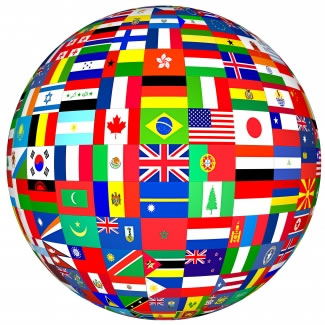Tips for Multi-Language Website Success

Multi-Language Website Success
Many online marketers and web designers are still ignoring the importance of adapting their websites for other languages and cultures.

While English was still the number one language on the Web in 2010 with 536.6 million users viewing pages in English, Chinese is closing in with 444.9 million users. This means that there are almost the same number of Chinese users as there are English and if your website is in the business of selling, then you are missing out on a potential 78% of internet users if you only provide an English version of your site.
Here's we'll explore some of the main areas you need to consider when creating and optimizing your site for a multi-lingual audience:
Keyword Research
One of the most common pitfalls of localizing your website into another language is not spending enough time researching language specific keywords. Simply translating your English keywords is a step on the road to failure. The classic example Google Translate gives for 'car insuránce' in French is 'l'assurance automobile.' While this is an accurate translation French users will more than likely not use this keyword at all and type something along the lines of 'assurance voiture.'
Foreign language keyword research should be approached in more or less the same way that English keyword research is achieved by using a native speaking professional translator who is able to brainstorm for synonyms and the most commonly used search terms for that country.
TLD vs. Sub Domain
This age old debate nevér fails to arise on discussions of multi-lingual websites. Is it better to use a country code top level domain (ccTLD) or a sub domain of your main domain?
Both choices have their ups and downs. For instance, using a ccTLD such as www.yourdomain.it may make your site look slightly more authoritative in Italy to local search engines and visitors than a .com/.net address, although there is much debate as to whether this is truly the case.
Using ccTLD's is useful if you are looking to target countries or regions, but don't get caught in the trap if you simply want to provide alternative languages for your site. There are many countries that speak the same language. You wouldn't really want your Spanish .es site serving your South American visitors would you? Add in the cost of some ccTLD's, maintainability issues of separate domains and hosting and you have to ask yourself if you are targeting a specific language or a specific country.
The alternative is to use a sub domain of your main domain such as www.it.yourdomain.com or even www.yourdomain.com/it. This method is more practical if you are looking to provide alternative translations of your content but are not solely focused on selling products or services in a specific country or region.
Cross-Cultural Content
It's not only keywords that need to be researched and managed; content also needs to be properly localized for each language. A common mistake is to poorly translate English content or have content machine translated on the fly.
Content should be properly localized for individual cultures and that doesn't just mean getting your content translated. Different cultures prefer different styles. You could get away with an informal, almost 'chatty,' tone when writing for a UK audience. But try this for a German audience and visitors will more than likely be put off by your lack of professionalism since they prefer a more corporate, to the point, efficient tone.
You should get to know your target audiences and what their preferences are. Use analytics and statistics to evaluate your landing pages and content. How long are your visitors staying on a page? How high is your bounce rate?
Successful multi-lingual content is a mix of many different things, including SEO, and can take numerous trial and error attempts to get right. So research, refine, and re-write!
Translation Management
Management of your translated content also needs careful consideration. What happens when you alter your English pages? Do you leave your other language pages as they are or have them translated again?
There are efficient ways of working with translated content such as the open source GNU gettext framework which allows your translators to work from easy to use .po files. We will be exploring this method further in a future article. There are also numerous methods for popular blog platforms to manage translations.
Analytics, Analytics & Analytics
Google Analytics shouldn't ever be ignored. First you should make sure you have a separate account for each domain or sub domain you have running. This will help to segment and breakdown the analysis of each site and enable you to draw conclusions on how each country or language version is performing and where to improve.
Looking for a multiple language website for YOUR business?
Look no further than the folks at efelle -we've been creating and servicing high end business websites in several languages for 6 years and counting! Call us today at 206.483.4909 or use our website contact form to get answers to YOU multi-lingual website questions.
* Source: SPN / Luigi Koechlin (c) 2011